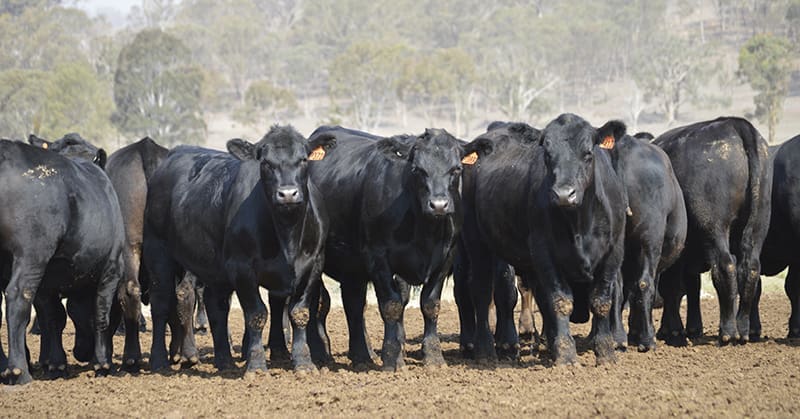
Angus Australia has announced the availability of Research Breeding Values for Coat Type, available for Angus producers.
Identified as a trait of importance – particularly for the adaptability of Angus genetics in hotter, more tropical environments – coat type refers to an animal’s hair length, fibre diameter and handle.
The development of Coat Type Research Breeding Values (RBVs) has resulted from the analysis of coat scores for over 6000 animals as part of a collaborative partnership between Angus Australia and the School of Environmental and Rural Science at the University of New England.
Angus Australia Breed Development and Extension Manager Andrew Byrne said while research was required to confirm the relationship between coat type and traits associated with the profitability and productivity of Angus animals in Australian production systems, anecdotally, animals with shorter, sleeker coats were commonly considered to have better heat tolerance and tick resistance, and a lower dag burden in feedlot environments.
Research Breeding Values (RBVs) have been published for sires entered in the Angus Sire Benchmarking Program, that had a Coat Type RBV with greater than 70pc accuracy.
Understanding Coat Type RBVs
Coat Type (CT) RBVs provide estimates of genetic differences between animals in coat type, being the subjective assessment of an animal’s hair length, fibre diameter and handle, and are expressed in score units.
Lower Coat Type RBVs indicate an animal is expected to produce progeny with a shorter, slicker coat. For example, a sire with a CT RBV of -0.30 would be expected to produce progeny that have, on average, 0.25 of a score shorter, slicker hair than a sire with a CT RBV of +0.20, all other things being equal.
The list of animals with coat score RBVs calculated can be found HERE.
Collecting Coat Scores
Angus Australia members interested in assisting with the research are encouraged to collect coat scores on their animals. Coat scores are collected using a 1-7 score system, with a score of 1 indicating a sleek coat and a score of 7 indicating a very hairy coat.
Angus Australia provides a details collection guideline for coat type scoring for Angus animals (click here to access), including the seasonal timing for collection and age specifications.
Source: Angus Australia
